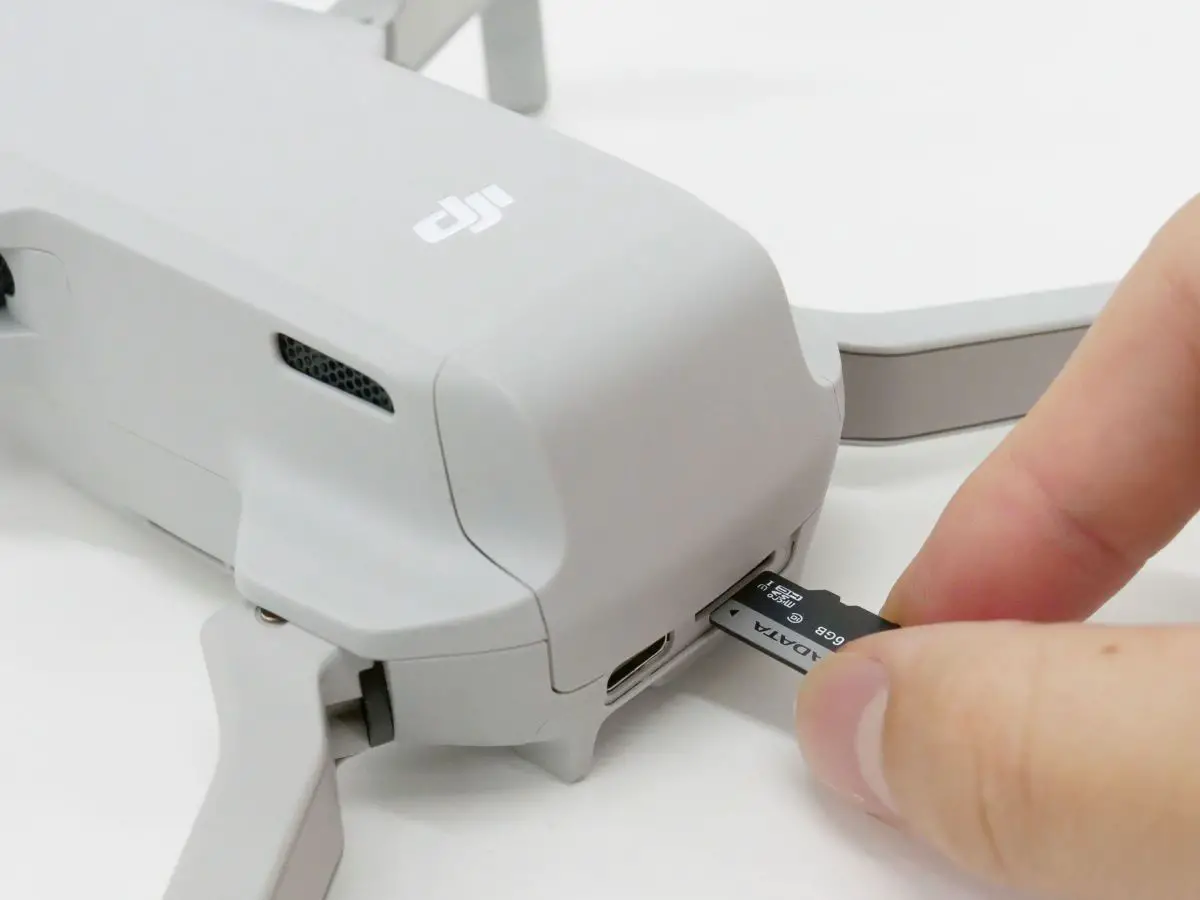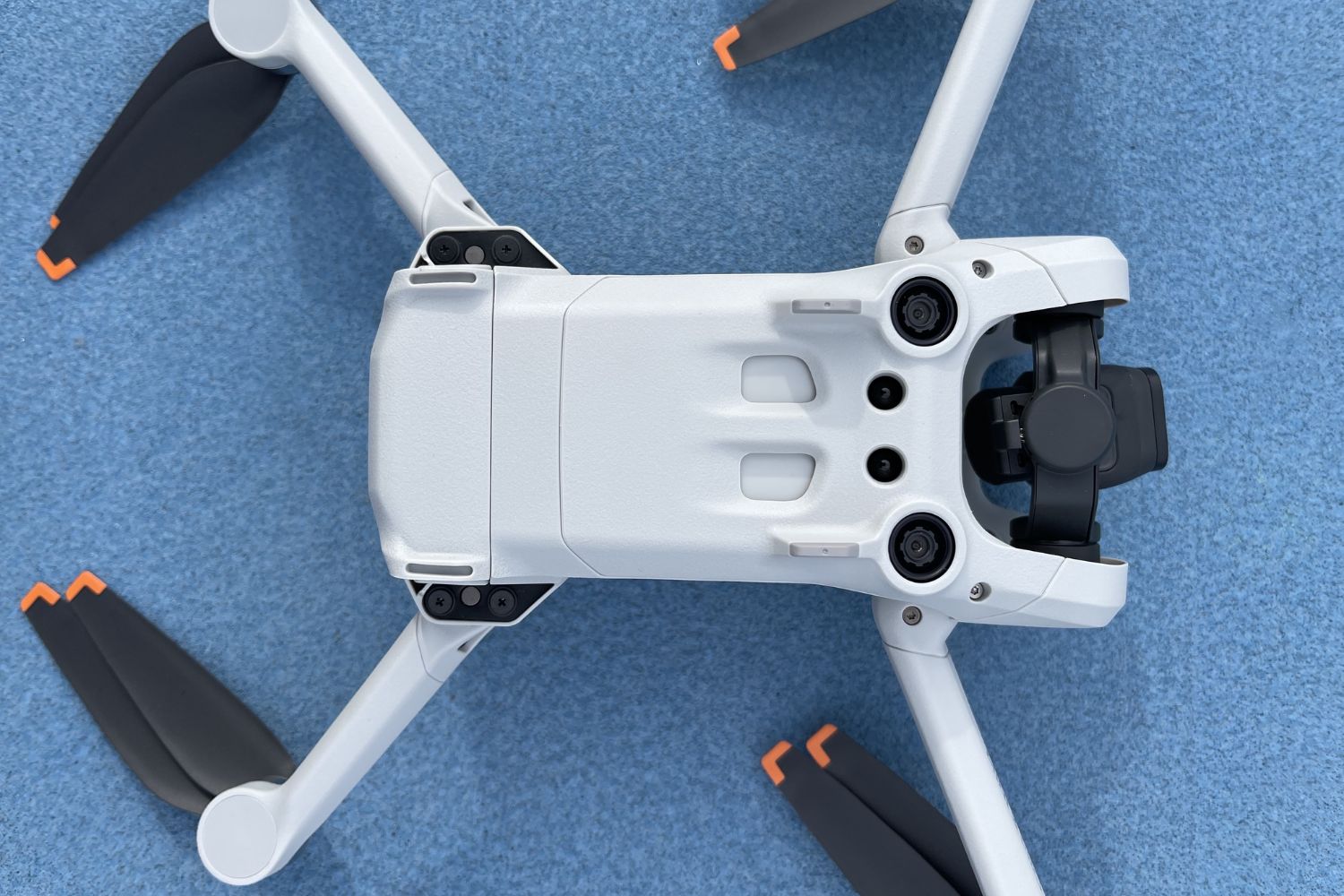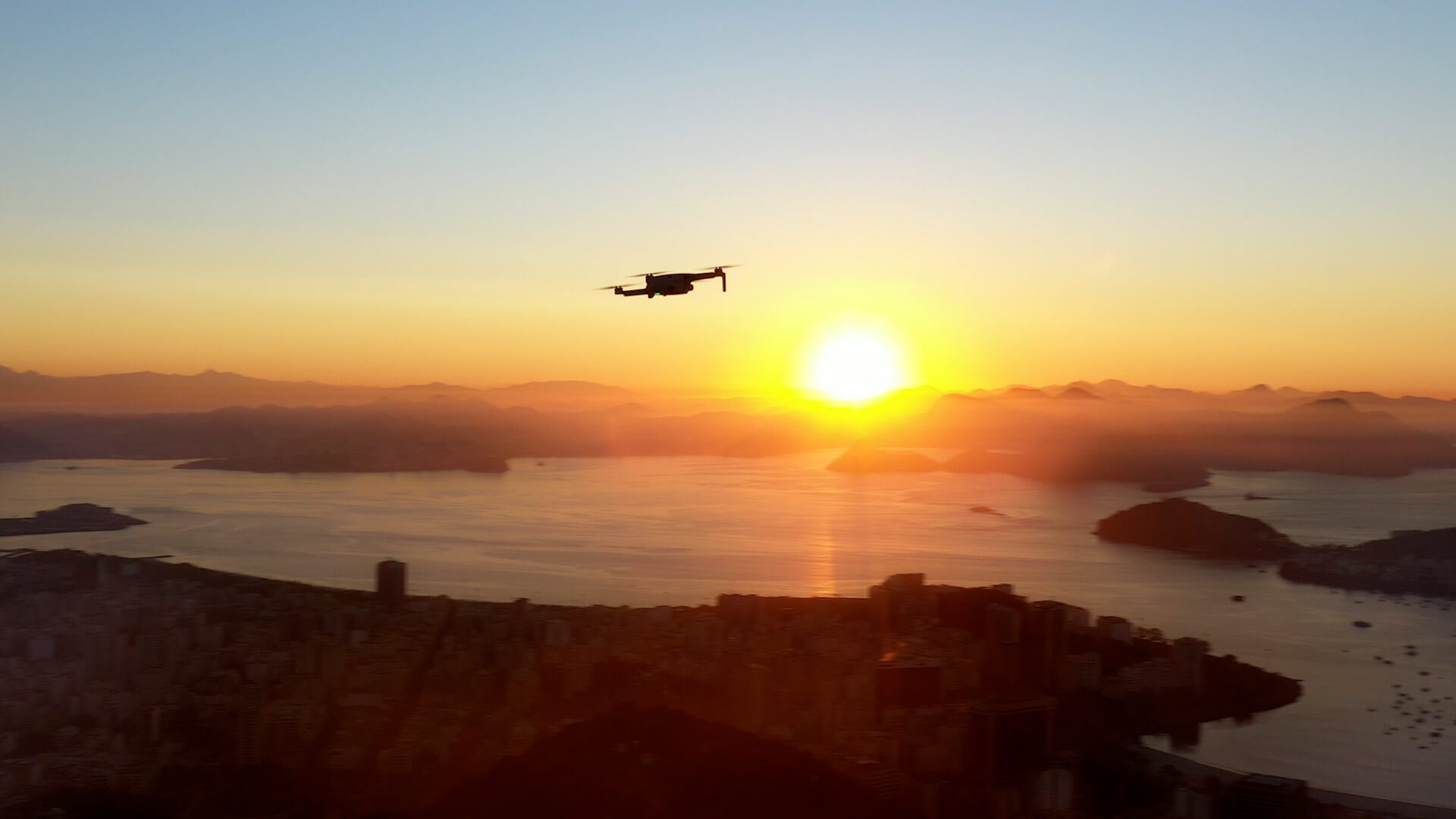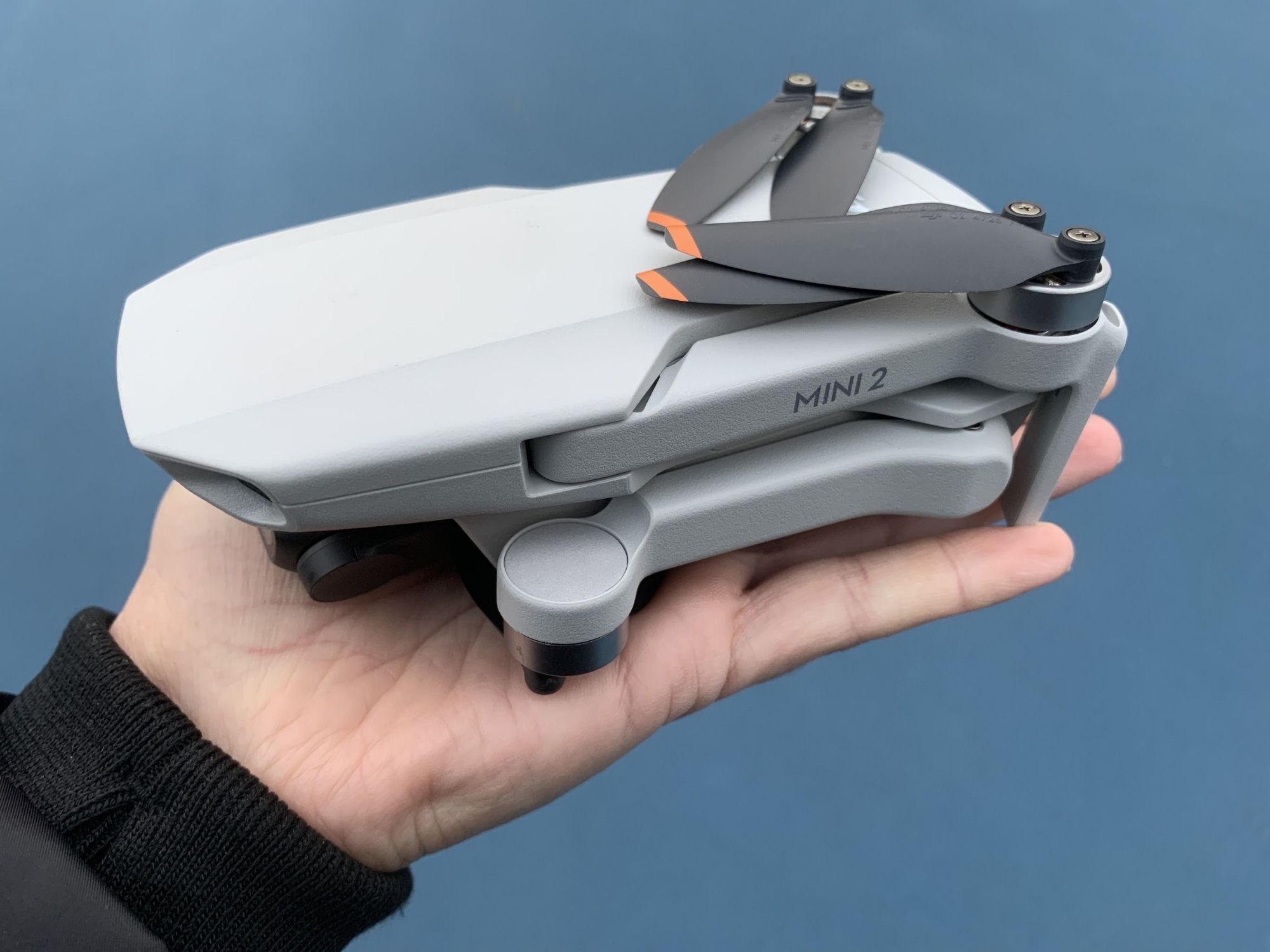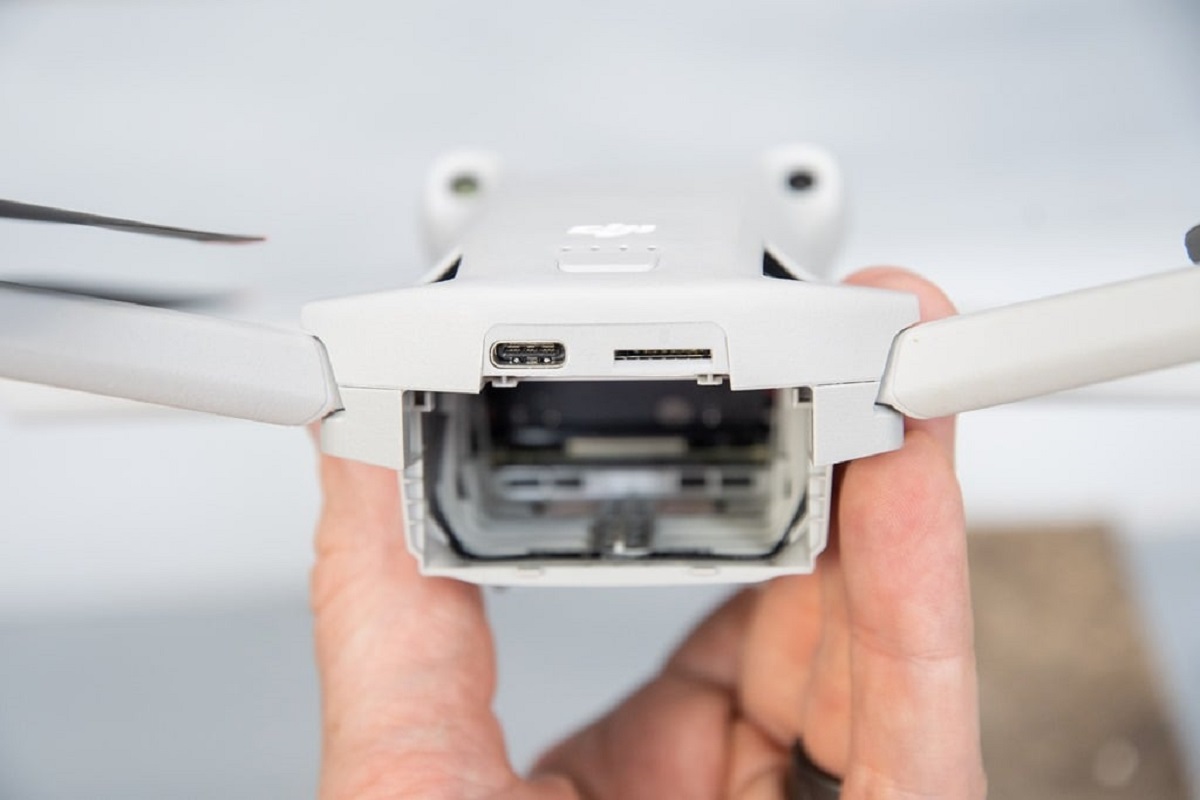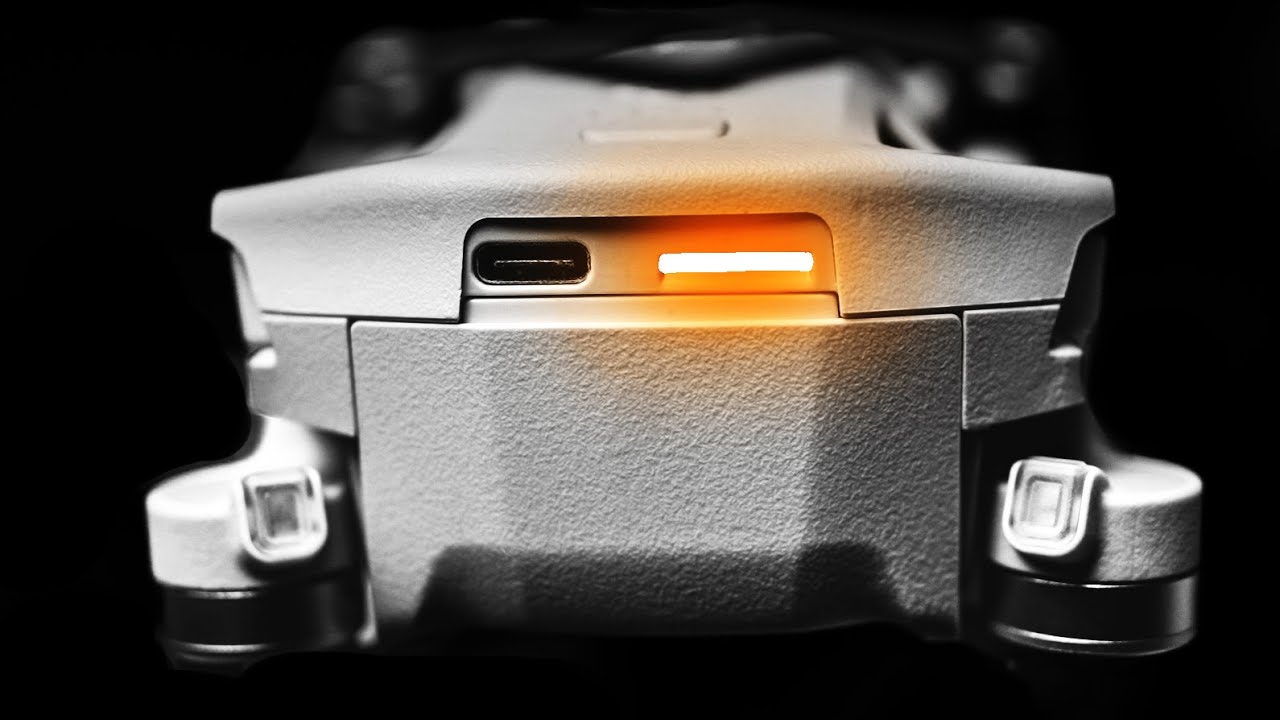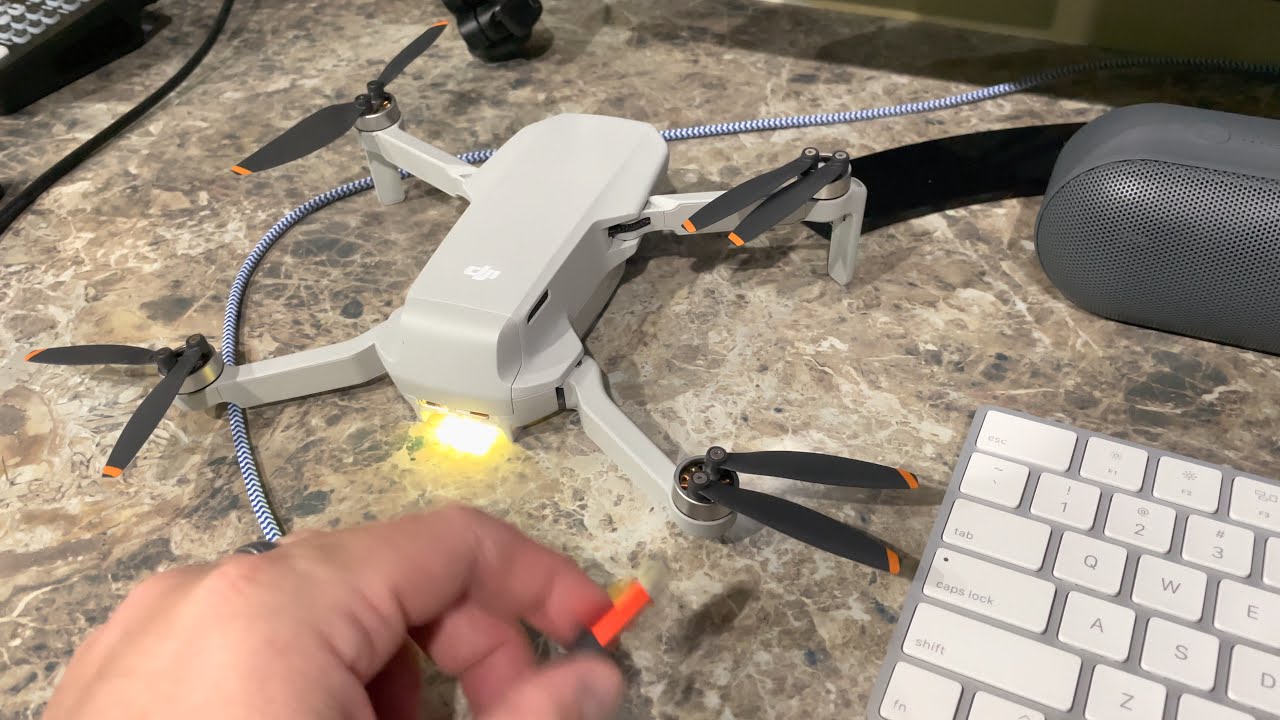Introduction
Welcome to the world of aerial photography and videography with the DJI Mini 2! This compact and powerful drone has revolutionized the way we capture breathtaking moments from above. As you delve into the exciting world of aerial creativity, it is essential to equip yourself with the right tools, and one crucial accessory is the SD card.
An SD card, or Secure Digital card, is the storage medium that allows your DJI Mini 2 to save high-resolution photos and videos. It is like the memory bank of your drone, storing all the precious moments you capture during your flights. However, not all SD cards are created equal, and choosing the right one is paramount to ensure smooth operation and optimal performance.
In this article, we will dive into the importance of selecting the right SD card for your DJI Mini 2 and cover crucial factors such as card specifications, size, read and write speeds, formatting, and proper handling to help you make informed decisions. So, let’s take flight into the world of SD cards and explore how they can enhance your DJI Mini 2 experience!
Importance of Choosing the Right SD Card for DJI Mini 2
Choosing the right SD card for your DJI Mini 2 is not just a matter of convenience; it directly impacts the performance and reliability of your drone. Here’s why it’s crucial to make an informed decision:
- Compatibility: Not all SD cards are compatible with the DJI Mini 2. Using an incompatible card can result in compatibility errors and even potential data loss. It is essential to choose an SD card specifically designed for the drone.
- Storage Capacity: The capacity of the SD card determines how many photos and videos you can store on your DJI Mini 2. Opting for a higher capacity card allows you to capture more footage without the need for frequent transfers or card swaps.
- Reliable Recording: A high-quality SD card ensures uninterrupted recording of your aerial adventures. The right card should be capable of handling the write speeds required by the DJI Mini 2, enabling smooth and seamless footage capture without any interruptions or dropped frames.
- Data Transfer Speed: The speed at which your SD card can transfer data is crucial when it comes to the efficiency of transferring files to your computer or other devices. Selecting an SD card with fast data transfer speeds allows for quick and efficient post-flight data transfer and editing.
- Durability and Longevity: The environment in which you fly your DJI Mini 2 can be challenging, with factors like temperature, humidity, and vibration. A high-quality SD card designed to withstand these conditions will ensure that your data remains safe and secure, even in harsh environments.
- Future-Proofing: Choosing a high-capacity SD card with ample room for expansion future-proofs your setup. It allows you to capture more content as your creative endeavors evolve without being limited by storage constraints.
By selecting the right SD card for your DJI Mini 2, you can ensure compatibility, reliable recording, efficient data transfer, and longevity. Now that we understand the importance of choosing the right SD card, let’s explore the specifications you need to consider when purchasing one.
Understanding SD Card Specifications
When choosing an SD card for your DJI Mini 2, it is important to understand the key specifications that determine its performance and compatibility. Here are the essential SD card specifications to consider:
- Card Capacity: The card capacity refers to the amount of storage space available on the SD card, typically measured in gigabytes (GB) or terabytes (TB). It determines how many photos and videos you can store on the card.
- Card Speed Class: The speed class of an SD card indicates its minimum sustained write speed. There are different speed classes, including Class 2, Class 4, Class 6, Class 10, UHS Speed Class 1 (U1), and UHS Speed Class 3 (U3). For optimal performance with the DJI Mini 2, it is recommended to use a card with a minimum speed class of U3.
- Video Speed Class: The video speed class of an SD card is specifically designed for video recording and playback. It ensures smooth and uninterrupted video capture at specific resolutions and bit rates. For the DJI Mini 2, a V30 (Video Speed Class 30) or higher is recommended.
- UHS Speed Class: The Ultra High-Speed (UHS) speed class is denoted by a number inside a “U” symbol, such as U1 or U3. It represents the card’s minimum sustained write speed for UHS interfaces. Using a UHS-I or UHS-II card is compatible with the DJI Mini 2.
- Read and Write Speeds: The read and write speeds of an SD card determine how quickly data can be transferred to and from the card. It affects the speed at which you can transfer files to your computer and the performance of your drone during recording. Faster read and write speeds result in smoother operation and faster data transfer.
- File System: The file system is the structure that allows the SD card to organize and manage files. For the DJI Mini 2, it is recommended to use the exFAT file system for compatibility and to overcome the 4GB file size limit of the FAT32 system.
Understanding these specifications will help you make an informed decision when choosing an SD card for your DJI Mini 2. Now, let’s explore some recommended SD card brands that are trusted and well-suited for your drone.
Recommended SD Card Brands for DJI Mini 2
When it comes to choosing an SD card for your DJI Mini 2, it is essential to opt for reliable brands known for their quality and compatibility. Here are some recommended SD card brands that are trusted by drone enthusiasts:
- SanDisk: SanDisk is a well-known brand that offers a wide range of high-quality SD cards. They are known for their durability, fast performance, and compatibility with various devices. Look for SD cards from their Extreme or Extreme Pro series, which provide excellent write speeds for smooth video recording.
- Lexar: Lexar is another reputable brand that offers reliable and high-performance SD cards. With options like their Professional series, Lexar SD cards provide fast write speeds and ample storage capacity. They are designed to handle the demands of professional photography and videography.
- Samsung: Samsung is known for its technological innovations, and their SD cards are no exception. Samsung SD cards offer fast write speeds, high capacity, and excellent reliability. Look for their EVO or PRO series for optimal performance and compatibility with your DJI Mini 2.
- Transcend: Transcend is a trusted brand that offers a range of SD cards suitable for drones. Their high-speed SD cards ensure smooth video recording and fast file transfers. Look for their High-Endurance or Ultimate series for the best performance with your DJI Mini 2.
- Kingston: Kingston is renowned for its memory products, including SD cards. Kingston SD cards provide reliable performance, ample storage capacity, and fast transfer speeds. Consider their Canvas or Gold series for a reliable and compatible SD card for your DJI Mini 2.
These brands have established themselves as leaders in the field, known for producing SD cards that meet the requirements of demanding tasks like aerial photography and videography. Selecting an SD card from one of these reputable brands ensures compatibility, reliability, and optimal performance for your DJI Mini 2.
Now that we have explored the recommended SD card brands, it’s time to delve into the size of SD card suitable for your DJI Mini 2.
What Size of SD Card is Suitable for DJI Mini 2?
When it comes to the size of the SD card for your DJI Mini 2, the general rule of thumb is the larger, the better. Having a higher capacity SD card ensures that you have enough storage space to capture and store all your aerial adventures without the need to frequently transfer files or swap cards.
For the DJI Mini 2, it is recommended to use an SD card with a minimum capacity of 32GB. This provides ample space for storing photos and videos without worrying about running out of storage during your flights. However, if you plan to shoot longer videos or capture a large number of high-resolution images, opting for a higher capacity SD card, such as 64GB, 128GB, or even 256GB, would be beneficial.
Keep in mind that the size of the SD card does not affect the performance of your DJI Mini 2. Whether you use a 32GB or 256GB card, the drone will operate with the same speed and efficiency.
It’s worth noting that larger capacity SD cards tend to be more expensive. Therefore, consider your budget and the amount of content you expect to capture before making a purchase. If you plan to shoot shorter videos and capture fewer images, a 32GB or 64GB SD card should suffice. However, if you anticipate longer flights and more extensive content creation, it is recommended to invest in a larger capacity SD card.
Remember, having a higher capacity SD card enables you to have the flexibility to capture more footage and focus on your creative process without worrying about limited storage space. Now that we have discussed the suitable size of SD card, let’s explore the importance of read and write speeds for optimal performance.
Understanding Read and Write Speeds for SD Cards
The read and write speeds of an SD card are crucial factors to consider when choosing a card for your DJI Mini 2. These speeds determine how quickly data can be transferred to and from the card, ultimately affecting the performance and efficiency of your drone and data transfer process.
The read speed refers to how quickly your device can retrieve data from the SD card. It is important for smooth playback of high-resolution videos and faster file transfers to your computer. The higher the read speed, the faster your device can access and retrieve data from the card.
The write speed, on the other hand, determines how quickly your SD card can save data from your drone. It directly impacts the smoothness of video recording and the ability to capture continuous shots without interruptions or delays. Higher write speeds ensure that your DJI Mini 2 can efficiently write data to the SD card without any dropped frames or recording issues.
SD card manufacturers typically specify the read and write speeds on the packaging or in the product specifications. These speeds are measured in megabytes per second (MB/s) and often vary depending on the card’s class and speed rating.
For optimal performance with the DJI Mini 2, it is recommended to use an SD card with a minimum write speed of 30MB/s or higher. This ensures smooth video recording, especially when shooting in higher resolutions and frame rates. Faster write speeds also contribute to faster data transfer when importing files to your computer for editing and sharing.
Additionally, selecting an SD card with a fast read speed is beneficial for efficiently transferring files from the card to your computer. This saves time and enhances productivity during post-flight workflows.
It’s worth noting that the read and write speeds required for your specific needs may vary. If you plan to shoot in higher resolutions, such as 4K or 2.7K, or capture fast-action scenes, opting for an SD card with even higher write speeds, such as 60MB/s or 90MB/s, can further enhance your overall experience.
To summarize, understanding the read and write speeds of an SD card is crucial for ensuring smooth video recording, efficient data transfer, and optimal performance with your DJI Mini 2. Now that we have covered the importance of read and write speeds, let’s explore the recommended SD card format for your drone.
SD Card Format for DJI Mini 2
When it comes to formatting the SD card for your DJI Mini 2, it is recommended to use the exFAT file system. The exFAT format is compatible with both Windows and macOS, allowing for seamless data transfer and easy access to your files.
The exFAT file system offers several advantages over the older FAT32 format. One major advantage is its ability to support larger individual file sizes. FAT32 has a maximum file size limit of 4GB, which can be restrictive when recording longer videos in higher resolutions. With exFAT, you can overcome this limitation, allowing for uninterrupted recording of long videos.
In addition to supporting larger file sizes, the exFAT format also provides better performance and improved data organization. It efficiently handles the demands of high-resolution video recording and ensures smooth file transfer between your DJI Mini 2 and your computer.
Formatting your SD card as exFAT is a straightforward process. Simply insert the SD card into your computer using an SD card reader, and then locate the SD card in your file explorer. Right-click on the SD card and select the “Format” option. From there, choose “exFAT” as the file system, and click on “Start” to begin the formatting process.
It is important to note that formatting the SD card will erase all existing data. Therefore, it is essential to ensure that you have backed up any important files before proceeding with the formatting process.
By using the exFAT format for your SD card, you ensure compatibility, overcome file size limitations, and maintain optimal performance with your DJI Mini 2. Now that we have covered the SD card format, let’s explore some tips for properly inserting and removing SD cards from your drone.
Tips for Properly Inserting and Removing SD Cards
Properly inserting and removing the SD card from your DJI Mini 2 is essential to prevent any damage to both the drone and the card itself. Here are some tips to ensure a smooth and safe process:
- Power Off the Drone: Before inserting or removing the SD card, make sure to power off your DJI Mini 2. This ensures that the drone is not actively writing or accessing the card, minimizing the risk of data corruption or physical damage.
- Access the SD Card Slot: Locate the SD card slot on your DJI Mini 2. It is typically located in a designated compartment on the side or underside of the drone. Gently open the compartment or remove the protective cover to access the slot.
- Inserting the SD Card: Hold the SD card with the label side facing up, and carefully insert it into the SD card slot. Make sure the card is aligned with the slot, and push it in gently until it clicks into place. Do not force the card or apply excessive pressure.
- Removing the SD Card: To remove the SD card, push it in slightly to release the locking mechanism. The card will pop out partially, allowing you to grip and gently pull it out. Avoid pulling the card forcefully or using sharp objects to remove it.
- Handle the SD Card with Care: When handling the SD card, avoid touching the metal contacts or exposing it to moisture, dirt, or extreme temperatures. These can potentially damage the card and lead to data loss or card malfunction.
- Store the SD Card Properly: When the SD card is not in use, keep it in a protective case or a dedicated SD card holder. This protects it from physical damage and prevents dust or debris from entering the card slot.
By following these tips, you can safely and effectively insert and remove the SD card from your DJI Mini 2 without risking damage to the drone or the SD card. Proper handling ensures the longevity and reliability of your SD card, allowing you to capture countless aerial moments with confidence.
Now that we have covered tips for SD card handling, let’s explore some guidelines for maintaining and handling SD cards for the DJI Mini 2.
Maintaining and Handling SD Cards for DJI Mini 2
Maintaining and handling your SD cards properly is essential to ensure their longevity and reliable performance with your DJI Mini 2. Here are some guidelines to help you take care of your SD cards:
- Keep the SD Card Clean: Regularly clean the SD card to remove any dirt, dust, or fingerprints. Use a soft, lint-free cloth to gently wipe the metal contacts and the outer surface of the card. Avoid using abrasive materials or harsh chemicals that could potentially damage the card.
- Avoid Exposure to Extreme Conditions: SD cards are sensitive to extreme temperatures, humidity, and moisture. To prevent damage, avoid exposing your SD card to direct sunlight, high temperatures, or humid environments. Store the cards in a cool, dry place when not in use.
- Avoid Bending or Flexing the Card: SD cards are designed to be flexible, but excessive bending or flexing can lead to physical damage. Be cautious when handling and storing the cards to prevent any bending or deformation.
- Avoid Sudden Power Loss: Ensure that your DJI Mini 2 is powered off before inserting or removing the SD card. Sudden power loss or removing the card while the drone is still on can result in data corruption or damage to the card.
- Protect the SD Card from Magnetic Fields: Avoid exposing the SD card to strong magnetic fields, as they can potentially erase or corrupt the data stored on the card. Keep the cards away from magnets and magnetic objects.
- Regularly Backup Your Data: To safeguard your precious aerial footage, make it a habit to regularly back up the data from your SD card to a reliable storage device. This ensures that even if the SD card fails or gets damaged, your footage remains safe.
By following these guidelines, you can ensure the proper maintenance and handling of your SD cards for the DJI Mini 2. Taking care of your SD cards prolongs their lifespan, maintains their performance, and allows you to capture and enjoy your aerial adventures without any worries.
Now that we have covered maintaining and handling SD cards, let’s wrap up our discussion on this topic.
Conclusion
Choosing the right SD card for your DJI Mini 2 is crucial for optimal performance and reliability. By considering factors such as compatibility, storage capacity, read and write speeds, and SD card format, you can ensure a seamless and enjoyable experience when capturing aerial footage.
When selecting an SD card, opt for reputable brands like SanDisk, Lexar, Samsung, Transcend, or Kingston, known for their quality and compatibility with drones. Ensure that the card has sufficient capacity to store your photos and videos, and consider faster write speeds to allow smooth and uninterrupted video recording.
Formatting the SD card as exFAT and properly inserting and removing it from the drone are important steps to maintain compatibility and prevent any damage. Additionally, handling the SD card with care and regularly maintaining it by keeping it clean and protecting it from extreme conditions will maximize its lifespan and performance.
Remember, the SD card is not just a storage medium; it is an essential component that plays a significant role in your aerial photography and videography. By choosing the right SD card and taking care of it properly, you can confidently capture and store all the breathtaking moments from your DJI Mini 2 flights.
Now that you have the knowledge to make informed decisions about SD cards for your DJI Mini 2, go ahead and choose the one that meets your requirements and embark on your drone adventures with confidence!







